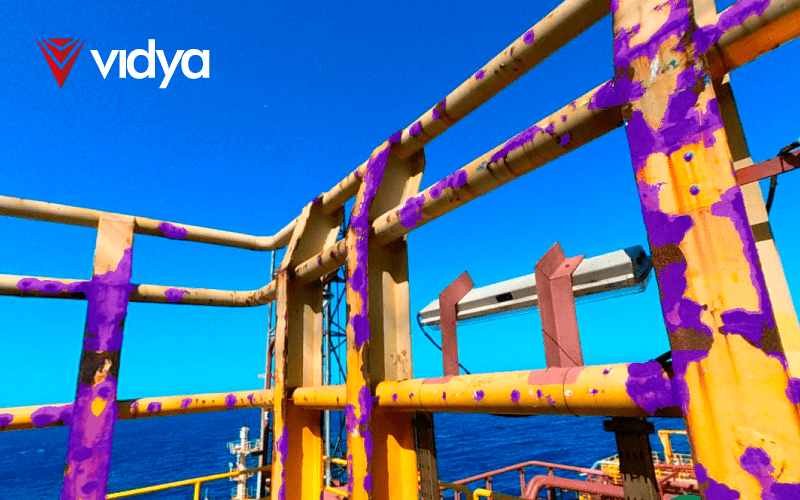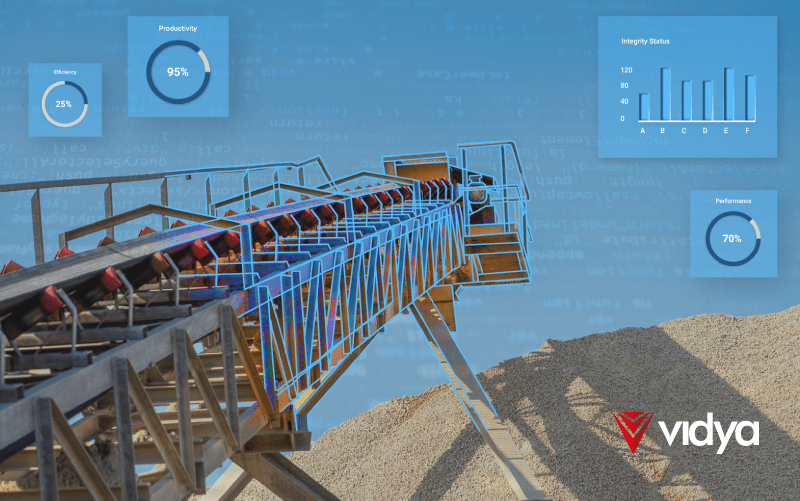Industrial maintenance is a crucial but challenging aspect of large-scale process industries. Traditional maintenance methods result in expensive, risky, time-consuming, and often inefficient activities. This has led to a growing implementation of digital technologies to optimize maintenance, which made clear the opportunities that these optimized processes offered, like foreseeing anomalies with predictive maintenance for example.
However, successfully implementing this maintenance approach requires the integration of different cutting-edge technologies. Despite the complexity surrounding the adoption of predictive maintenance, we need to understand its leveraged opportunities in industrial environments.
Why industrial maintenance requires predictive care
Industrial maintenance can be a costly, risky, and time-consuming process, especially when extracting resources at a large scale, such as oil and gas and mining. In this context, industries present an ongoing operation, which means that while production doesn’t stop, assets will continue to degrade. In this dynamic operational environment, maintenance can be conducted through the following methodologies:
- Corrective maintenance: It consists of a reactive approach, which means intervention occurs when failure has already happened. It’s fast for simple issues but can lead to unexpected downtime and higher repair costs in the long run;
- Preventive maintenance: It is based on a schedule or usage patterns to prevent failures with regular maintenance tasks. This helps extend equipment life and reduce downtime but can involve unnecessary maintenance if done too frequently;
- Predictive maintenance: It represents a proactive maintenance strategy that utilizes cutting-edge technologies to predict when equipment will fail. Instead of following a fixed schedule for maintenance tasks or waiting for a breakdown to occur, maintenance is performed only when necessary, maximizing efficiency and minimizing downtime.
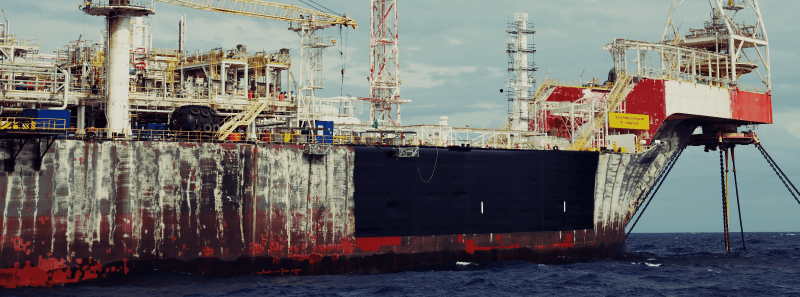
Predictive Maintenance is when AI steps up to the plate, optimizing structure treatment and maintenance schedule. The result is a system that identifies small problems before they become big failures.
According to McKinsey, the application of AI Predictive Maintenance decreases 30 to 50% of equipment stoppages and increases their lifetime by 20 to 40%. In this sense, AI-driven predictive maintenance not only improves the HSE (Health, Safety, Environment) standards but also enhances equipment uptime and maintenance schedules. In this regard, AI can be a useful tool for optimizing maintenance, but what exactly does AI Predictive Maintenance need to function smoothly?
How to leverage AI Predictive Maintenance full potential
AI Predictive Maintenance has a series of requirements to accurately forecast asset conditions. Essentially, this methodology needs treated equipment and machinery data to contextualize the operational environment, providing inputs to structure analysis. Another crucial factor is visualization, which is made possible by measuring the facility and by virtually representing it. Finally, given the process’ nature, anomalies still need to be located before they turn into failures with a proactive approach. In these conditions, the following tools are essential to leverage the full potential of AI Predictive Maintenance:
Data contextualization
Industrial operations generate massive amounts of historical data and analytics. However, historical data is not equal to treated data, and AI-powered predictive maintenance requires historical data to be properly contextualized for the algorithms to analyze. By integrating field images into trained algorithms and connecting them to a digital ecosystem, industries can leverage the power of data-driven insights to detect and prevent damages more efficiently and accurately with budget predictability.
According to Forbes, despite industries collecting vast amounts of data, 60% to 73% of this data is never successfully used for any strategic purpose. In this scenario, data contextualization comes as an opportunity for connecting different systems and making sure they can communicate and share data seamlessly. This approach delivers more organized and unified workflows to operations of any scale.
Reality Capture
When it comes to reporting anomalies, Reality Capture solutions offer a welcome replacement for manual methods by letting professionals digitally capture, share, and analyze real-world environment conditions to achieve safer and smarter decisions. According to AI developer NexoCode, inspectors may struggle with dealing with large equipment numbers, causing fatigue and increasing the probability of errors. In these circumstances, non-optimized inspections consist of monotonous tasks that rely on robust documents for analyzing each asset. Given this, techniques such as LiDAR, laser scanning, and photogrammetry can help capture industrial realities precisely.
3D models
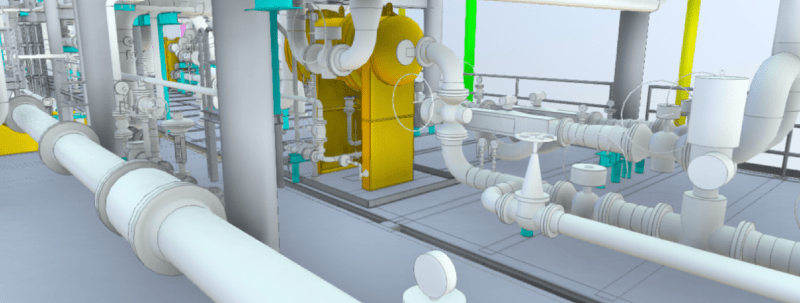
3D models are crucial for navigating and visualizing industrial environments digitally. These replicas offer a comprehensive representation of physical assets, allowing for detailed analysis and visualization of various operating scenarios. 3D models enable the integration of documents, technical manuals, and inspection reports for easier location of both the component and the associated data. Besides that, this technology enables immersive training and simulations, enhancing visualization and workplace safety and productivity.
Computer Vision
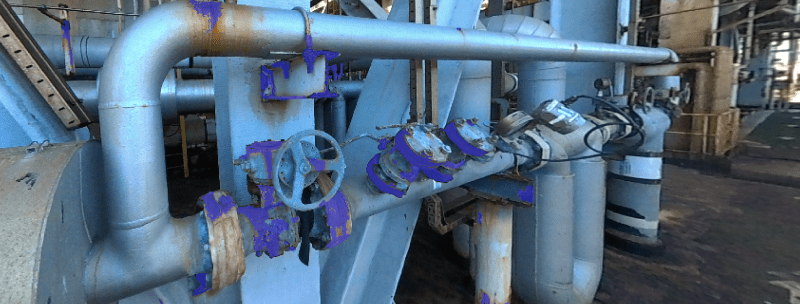
Computer Vision represents the ability of a computer to see. This technology functions by capturing and analyzing images from the surrounding environment. The images are trained as information through visual refinement algorithms, where filters are used to enable the recognition of behavioral patterns in the images. This technology marks a paradigm shift in which industries can easily identify minimum and hard-to-reach anomalies and address them before they turn into big problems. Grand View Research reports the value of the global Computer Vision market is expected to reach $19 billion by 2027, up from just over $11 billion in 2020.
Considering this, Computer Vision algorithms enable constant monitoring of an object’s conditions, allowing professionals to accurately determine the anomaly’s scalability and overall impact. Indeed, the use of this technology reduces costs, downtime, and the number of people on the field exposed to inherent risks, foreseeing safer, faster, and more accurate maintenance decisions.
Machine Learning
Machine Learning is the essence of Artificial Intelligence. Through this technology, systems can learn from data, without needing explicit programming. By analyzing massive datasets, machine learning algorithms identify patterns and improve their performance over time. This allows them to make predictions, classifications, and relevant alerts. According to Statista, the Machine Learning market size is expected to show an annual growth rate of 17.15%, resulting in a market volume of US$528.10bn by 2030. Nevertheless, knowing the predictive maintenance essentials, we need to understand how it works in practice.
How does AI predictive maintenance work?

Predictive maintenance analyzes the historical performance data of machines to forecast when one is likely to fail, limit the time it is out of service, and identify the root cause of the problem. In this context, Data Contextualization provides inputs to build a 3D representation of the operation. With the virtual environment created, Reality Capture attaches field images to it so Computer Vision can autonomously identify anomalies such as pitting, welding, potential discontinuities, and corrosion using Deep Neural Networks. Finally, Machine Learning analyzes the data to build a picture of the current and future condition of the operation.
Unlike human planners, this advanced analytics approach takes into account thousands of variables and constraints to support decision-making. By doing so, the benefits of predictive maintenance are made clear: improved uptime, reduced costs, and increased safety. Deloitte reported in 2022 that predictive maintenance can result in a 5-15% reduction in facility downtime and a 5-20% increase in labor productivity. This method makes it possible for operators to improve and safeguard decision-making, comparing the real impact of different parameters on business outcomes before making decisions and, in many cases, to consider counterintuitive actions that might improve productivity or profitability.
Conclusion
As the demand for predictive maintenance practices intensifies, industries are compelled to recognize AI’s pivotal role in mitigating losses and revolutionizing maintenance strategies. A November 2021 study from IoT Analytics estimated that the $6.9 billion predictive maintenance market would reach $28.2 billion by 2026. Within this scenario, AI Predictive Maintenance sets the pace for optimal Asset Integrity by empowering professionals with data-driven insights and safer maintenance decisions.
